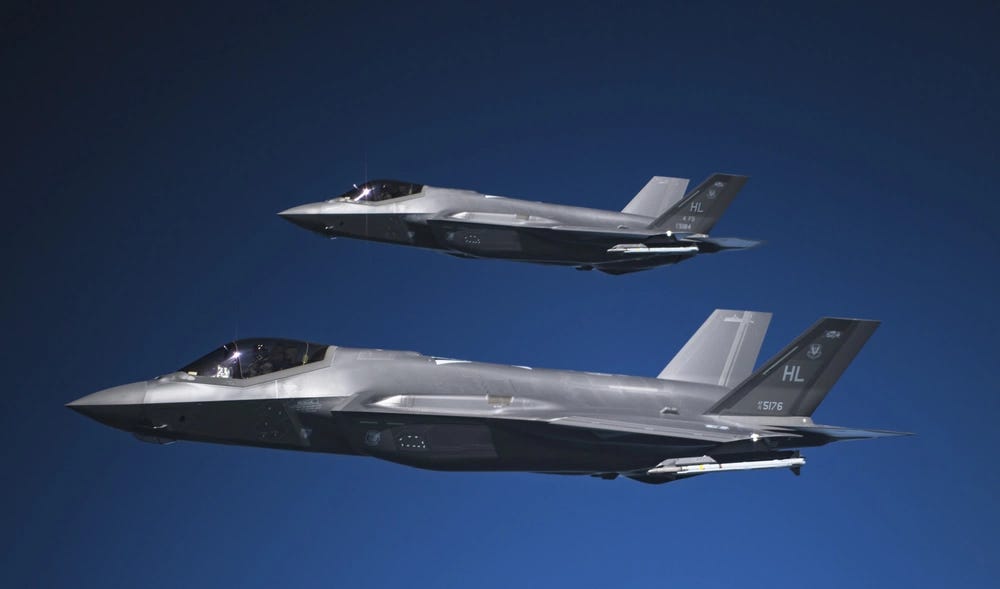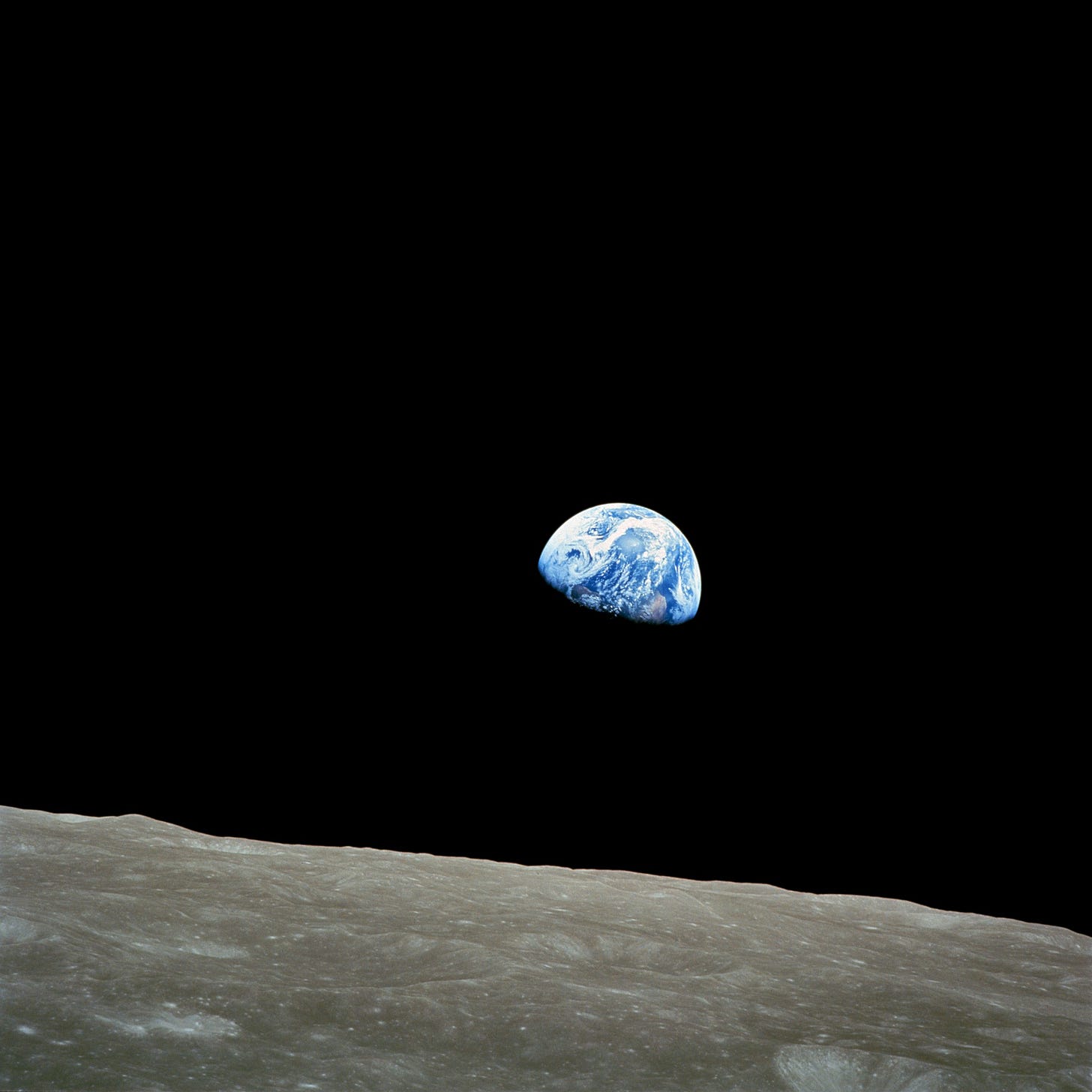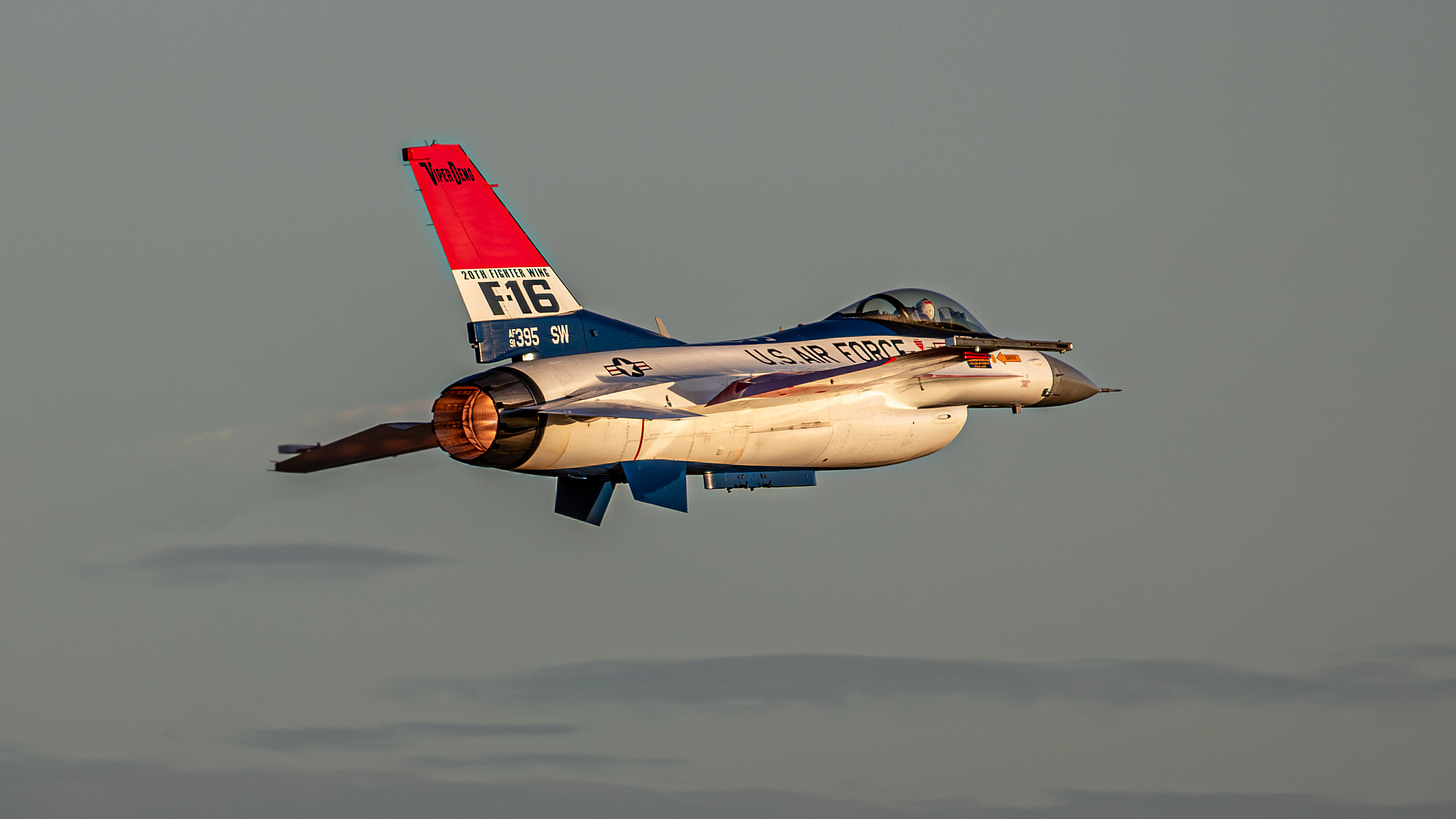Lockheed's new contract and looking back on an Earthrise
More F-35s are being built and remembering the Apollo 8 mission
“The function and Navy in any future war will be to support the dominant air arm.”
-Jimmy Doolittle
This week’s issue features a very special “In case you missed it” section, see below for more:
Mission Briefing:
Lockheed Martin’s recent $12 billion contract to produce 145 more F-35 Lightning II stealth fighters is more than just a headline—it’s a significant milestone for the future of air power. Covering production lot 18, this agreement ensures the delivery of three variants of the F-35 to the U.S. military and international allies, reinforcing the aircraft’s position as the backbone of modern air forces worldwide. But why is the F-35 so critical in today’s complex and evolving global security environment?
Breaking Down the Procurement
The contract will deliver:
48 F-35As to the U.S. Air Force, the conventional takeoff and landing variant.
16 F-35Bs to the U.S. Marine Corps, capable of short takeoff and vertical landing (STOVL).
19 F-35Cs split between the Marine Corps (5) and the U.S. Navy (14), the carrier-capable variant.
46 aircraft (39 F-35As and 7 F-35Bs) for international allies under foreign military sales agreements.
16 aircraft (15 F-35As and 1 F-35B) for undisclosed non-program partners.
With the contract expected to be completed by June 2027, most of the work will take place in Texas and California, underscoring the program's significant contribution to the U.S. defense industry.
The F-35: A Multirole Game-Changer
The F-35 is not just an aircraft—it’s a platform designed to dominate the modern battlespace. Here’s why it matters:
1. Stealth and Survivability
The F-35’s cutting-edge stealth technology makes it nearly invisible to enemy radar, allowing it to operate in contested environments where older aircraft would struggle to survive. This capability is crucial in conflicts against advanced adversaries equipped with sophisticated air defense systems.
2. Sensor Fusion and Situational Awareness
The F-35’s advanced sensors and computing power enable unparalleled situational awareness. Its ability to collect, process, and share information in real-time makes it a "quarterback" in the sky, coordinating operations and providing critical intelligence to friendly forces.
3. Multirole Capability
Designed to perform a wide range of missions, the F-35 can excel in air-to-air combat, ground attack, and intelligence, surveillance, and reconnaissance (ISR). Its three variants ensure compatibility with various operational needs, from land-based airfields to aircraft carriers and forward-operating bases.
4. Interoperability
The F-35 is the centerpiece of allied air forces, with over a dozen nations participating in its development and operation. This common platform enhances interoperability, enabling seamless collaboration in coalition operations and joint exercises.
5. Future-Ready Design
With a modular architecture and continuous software upgrades, the F-35 is built to adapt to emerging threats. Its ability to integrate next-generation weapons and technologies ensures its relevance for decades to come.
Why This Contract Matters
This $12 billion deal underscores the F-35’s pivotal role in the U.S. Department of Defense’s strategy. For the U.S. Air Force, the addition of 48 F-35As strengthens its ability to counter near-peer threats in the Pacific and Europe. For the Navy and Marine Corps, the F-35B and F-35C bring unique capabilities that enhance naval and amphibious operations, particularly in regions like the Indo-Pacific, where access to traditional runways may be limited.
Internationally, the delivery of 46 aircraft to allies demonstrates the F-35’s importance as a tool of global deterrence. By equipping partners with this advanced platform, the U.S. fosters stronger alliances and ensures a collective edge over potential adversaries.
Economic and Industrial Impact
The F-35 program isn’t just about military capability—it’s a significant economic driver. Employing thousands across the U.S., particularly in states like Texas and California, the program supports innovation and sustains a highly skilled workforce. Additionally, the international sales component strengthens trade relationships and reinforces the U.S. defense industrial base.
The Road Ahead
As the production of lot 18 begins, the F-35 continues to demonstrate why it’s indispensable in today’s strategic landscape. From deterring aggression to ensuring air superiority, the Lightning II is a symbol of technological excellence and a testament to the power of partnership.
With 145 more F-35s set to enter service, the message is clear: the F-35 isn’t just the fighter of today—it’s the fighter of the future.
This Week in Aviation History
24 December 1968 – Apollo 8’s Message to the World
As families around the globe gathered on Christmas Eve in 1968, a unique and profound moment united the world. Orbiting 240,000 miles above Earth, the crew of Apollo 8—Frank Borman, Jim Lovell, and William Anders—delivered a message that transcended borders, beliefs, and ideologies. It was the first time humans orbited another celestial body, marking a pivotal achievement in human history and space exploration. But it was their message, broadcast from lunar orbit, that etched itself into the collective memory of humanity.
William Anders began:
“For all the people on Earth, the crew of Apollo 8 has a message we would like to send you.”
What followed was a reading from the Book of Genesis, one of the most poetic and profound reflections on the creation of the world. As the astronauts read aloud the first verses of the Bible, their voices were carried over the airwaves to nearly a billion people watching or listening on Earth. The passage spoke of the formless void, the creation of light and darkness, and the gathering of waters into seas. It was a reminder of the fragility and beauty of our home planet, made all the more poignant by the astronauts' view of Earth—a brilliant blue marble suspended in the vast darkness of space.
The Apollo 8 Mission: A Leap Forward for Humanity
Apollo 8 was a mission of firsts. It was the first crewed spacecraft to leave Earth’s orbit, the first to journey to the Moon, and the first to return safely to Earth after traveling such immense distances. It was also a mission of immense risk. Just months earlier, the Apollo program had been fraught with setbacks, including the tragic loss of the Apollo 1 crew in a launch pad fire. Yet NASA forged ahead, determined to meet President John F. Kennedy’s challenge to land a man on the Moon before the end of the 1960s.
Launched on December 21, 1968, Apollo 8’s primary objective was to test systems critical for future lunar missions, including navigation and communications in lunar orbit. Over the course of six days, the crew demonstrated that human spaceflight could endure the challenges of deep space. Perhaps the most iconic moment came on Christmas Eve, when the astronauts photographed Earthrise, capturing the Earth rising over the Moon's horizon. This image, now one of the most famous photographs ever taken, profoundly shifted humanity’s perception of its place in the universe.
The Genesis Reading
The decision to read from Genesis was made by the crew in the days leading up to the mission, with the goal of providing a message that would be inclusive and resonate with people of all backgrounds. The crew took turns reading:
William Anders: Spoke of the formless Earth, the light, and the division of light from darkness.
Jim Lovell: Continued with the creation of the firmament and the separation of waters.
Frank Borman: Concluded with the appearance of dry land and seas.
Borman ended the broadcast with heartfelt words:
“And from the crew of Apollo 8, we close with good night, good luck, a Merry Christmas, and God bless all of you – all of you on the good Earth.”
The Legacy of Apollo 8
Apollo 8’s success paved the way for the historic Apollo 11 Moon landing just seven months later. It demonstrated the ingenuity and courage of the human spirit and inspired a generation to dream bigger and aim higher. The mission also left an enduring legacy of environmental awareness. The image of Earthrise, coupled with the astronauts’ words, helped galvanize the modern environmental movement by showing the Earth as a small, fragile oasis in the vast cosmos.
On this Christmas Eve, as we look back on this historic moment, let us reflect on the unity and hope that Apollo 8 brought to the world. The crew's message, delivered with simplicity and grace, reminds us of the importance of cherishing our shared home—the good Earth.
In Case You Missed It
The NGAD vs the F-35:
An Extra In Case You Missed it:
‘twas a very special Gift Cat delivering presents on the night before….
Photo Outlet
Over the next year I will be releasing some of the best photos I took at the airshow, here is the next series:
Feel free to use these photos however you like, if you choose to tag me, I am @pilotphotog on all social platforms. Thanks!
Post Flight Debrief
Thanks for reading! Want to keep getting this newsletter straight to your inbox? Just sign up using the form below—it's that easy! This newsletter will always be free for everyone, but if you’d like to support the mission and unlock even more, consider becoming a paid subscriber. Either way, I’m grateful for your support. Sign up now and stay in the loop!
-Tog







